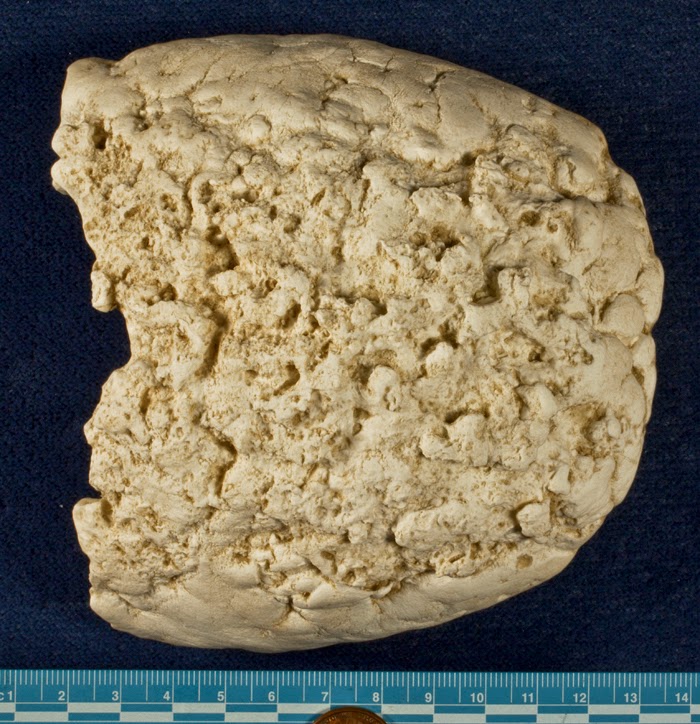“Not you,” I said. “Ian. Unless you mean to send him home to Jenny riddled with syphilis and other interesting forms of the clap.”
Jamie’s eyebrows rose toward his hairline, and he winced at the resultant sensation.”Ow. Syphilis? Ye think so?”
“I shouldn’t be a bit surprised. Pronounced dementia is one of the symptoms of the advanced disease – though I must say it would be hard to tell in her case. Still, better safe than sorry, hm?”
She wasn’t healthy; a glance of her mottled complexion and the dark circle beneath her eyes was enough to show that. But was she actually ill? (Voyager, Ch. 60)
Gummas are also present in syphilitic skulls. Here is an image of a gummatous skull. Note that the texture is not smooth at all.
The reader does have a description of Geillis’ skull in Voyager (Ch. 20). However, there is no indication that the skull is syphilitic. Joe even asks Claire to check for disease, and the only evidence found was the manner of death, a broken first vertebra (the axis). In a previous post, I discussed that the skeletal remains that Joe analyzes belong to Geillis. Here is the link.
At the same time, I tend to suspect that Geillis was mad before passing through the stones. My suspicion is based on the impression that her notebook left on Roger Wakefield / Mackenzie and also on the readers in Drums of Autumn, detailed in my first post about this topic.
Here is a small summary of the findings:
- It seems that Geillis has been mad for a while at least for more than 15 or 20 years. Dementia is a symptom of tertiary syphilis. It is not possible for her to suffer tertiary syphilis for a long time. Damage to the tissues and aneurysm in the aorta, another symptom of tertiary syphilis, do not allow a person to live that long with the disease.
- It is likely that her madness developed separately from syphilis or any other disease. Therefore, she probably acquired syphilis later on from one her husbands.
- In this post’s first citation, Claire even acknowledges that it is hard to diagnose Geillis’ condition.
So far the only thing that can be concluded is that Geillis’ insanity evolved separately from any disease. However, the reader has to keep in mind that this is a work of fiction, and the author might like to make certain changes to what is accepted and known in the real world. Probably the author wants to keep Geillis’ malady as an enigma.
Excerpts from
Gabaldon, Diana. Voyager. New York: Bantam Dell. 1994. Print.
Image is from Tertiary Syphilis

